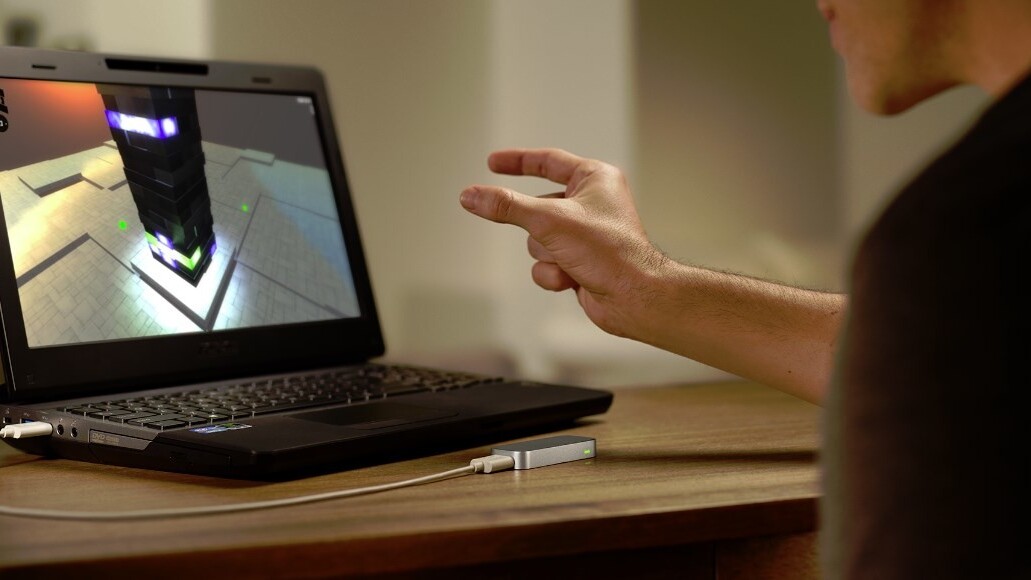
Motion capture hardware and software company Leap Motion today announced a number of updates to its developer ecosystem, expanding the pool of people able to code for its hardware, and helping those who may want to write for it in the future.
Leap Motion’s motion tracking technology is one of the few pieces of physical technology that I’ve had the pleasure of testing in the past few years that not only lived up to my lofty, and incredulous, expectations, but made me sit back and rethink how computing might work in the future.
This week, Leap Motion is expanding access of a new “phase” of its beta program for developers to more than 10,000 individuals. However, not everyone will get in at once, so be patient.
Perhaps even more important, later in this week Leap Motion intends to open its developer portal to the general public. This will allow anyone curious to measure Leap Motion’s development tools, and see what they will offer them when their turn comes. Current developers are getting more, and the curious will get a taste. Ahead of its July 22 device launch date, Leap Motion wants to prime the developer pump as much as it can.
Does this matter? The expansion of a developer network for a product that hasn’t yet launched? Frankly, yes.
Speaking broadly, there are a few ways to interact with a computer. Keyboard and mouse is the most common, or perhaps we should say keyboard, and a second input function, either mouse or touchpad. Touch, on laptops and desktop machines – via touch enabled monitors – is a growing, but yet small part of the computing realm. Touch on tablets and smartphones – rising cohorts of the computer world – is quite popular. Voice, nascent, is also ascendant.
Leap Motion is a different way of talking to your machine, instead asking you to hold your hand over a small, pack-of-gum-sized device, which will track your every digit’s quiver. Simply put, you raise your hand, and your computer obeys.
The controls are nothing that you can’t master in a day, if not sooner. And, given how cheap the devices are – far south of $100 – the technology will be open to anyone; Leap is also baking its hardware into regular laptops and other devices, despite the fact that those partnerships won’t reach mass scale – in unit terms – for some time.
I had the good fortune of playing with Leap’s technology on both the Windows and Mac platforms last week, and through its own portal: Airspace. My short take is that once Leap Motion’s software and hardware are completely ironed, and its app marketplace stocked, there won’t be a technology-minded person without such a device either on their desk, or in their laptop.
A final note: What about Kinect for Windows? Wasn’t it to be the technology to bring motion control to our main computers? Well, what Leap Motion does is throw together a number of inexpensive sensors fused with great software, that can track your hands in near-perfect action. What Kinect does it a more full-body, holistic form of tracking; Leap Motion is all about your hands.
Also, Leap doesn’t accept voice input. However, Leap Motion has a marketplace with applications – I have used them – and operating system integration that makes Windows 8 truly sing. And it’s coming out next month. Thus, in a way, Kinect for Windows could be viewed as a future Tesla model: powerful, but not yet here. Leap Motion, however, is all but here.
Perhaps even more important: Leap Motion can be quickly integrated into OEM level computers. Will Kinect find a similar home inside the plastic of laptops popping off the line? Perhaps not, given the size of its physical bulk. Still, the two technologies are different enough that their comparison is more expectations-setting than anything else.
For now, Leap Motion is making strides to expand its developer pool; if the last five years have taught us anything, it’s that any new platform lives or dies by its quick third-party developer support.
Once Leap units ship, we’ll have a full run-through in massive detail, just for you.
Get the TNW newsletter
Get the most important tech news in your inbox each week.





